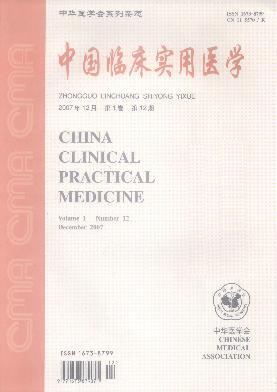Effects of constraint-induced movement therapy (CIMT) therapy based on health belief pattern on motor function and neurological function in patients with early stroke
引用次数: 0
Abstract
Objective Analyze the effect of CIMT on motor function and neurological function in patients with early stroke basing the framework of health belief model (HBM). Methods 70 patients with early stroke in our hospital from November 2012 to July 2016 were randomly devided into observation group and control group, 35 cases each group. The control group was given routine exercise rehabilitation therapy, the observation group was given the CIMT based on HBM, Fugl-Meyer motor function scoring method was used before intervention and after 8 weeks of intervention to evaluate the motor function of the two groups, the SF-36 scale [emotional function (RE), mental health (MH), physical activity (VT), physiological function (RP)] was used to evaluate the life quality of the two groups, and neurological excellent rate of the two groups were compared as well. Results There was no significant difference in FMA scores between the two groups before intervention (P>0.05); compared with that before the intervention, the FMA scores of the two groups were significantly increased after 8 weeks of intervention, and the observation group was higher than the control group, the difference was statistically significant (P 0.05); the scores of GH, PF, MH, VT, RP, SF, RE in the observation group were significantly higher than those in the control group after 8 weeks of intervention (P<0.05), and the difference was statistically significant (P<0.05). Conclusion Constraint-induced movement therapy based on Health Belief Model can promote limb function recovery of patients with early stroke, improve neurological function and the life quality of patients. Key words: Early stroke; Neurological function; Health belief model; Constraint-induced movement therapy; Motor function基于健康信念模式的约束诱导运动疗法(CIMT)对早期脑卒中患者运动功能和神经功能的影响
目的基于健康信念模型(HBM)框架,分析CIMT对早期脑卒中患者运动功能和神经功能的影响。方法将2012年11月~ 2016年7月我院收治的70例早期脑卒中患者随机分为观察组和对照组,每组35例。对照组给予常规运动康复治疗,观察组给予基于HBM的CIMT,干预前和干预8周后采用Fugl-Meyer运动功能评分法评价两组的运动功能,采用SF-36量表[情绪功能(RE)、心理健康(MH)、身体活动(VT)、生理功能(RP)]评价两组的生活质量。并比较两组神经系统优良率。结果干预前两组患者FMA评分比较,差异无统计学意义(P < 0.05);与干预前比较,干预8周后两组患者FMA评分均显著升高,且观察组高于对照组,差异有统计学意义(P < 0.05);干预8周后,观察组患者GH、PF、MH、VT、RP、SF、RE评分均显著高于对照组(P<0.05),差异有统计学意义(P<0.05)。结论基于健康信念模型的约束诱导运动治疗可促进早期脑卒中患者肢体功能恢复,改善患者神经功能,提高患者生活质量。关键词:早期脑卒中;神经功能;健康信念模型;约束诱导运动疗法;运动机能
本文章由计算机程序翻译,如有差异,请以英文原文为准。
求助全文
约1分钟内获得全文
求助全文

 求助内容:
求助内容: 应助结果提醒方式:
应助结果提醒方式:


